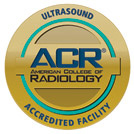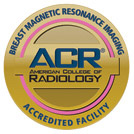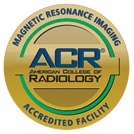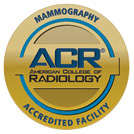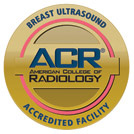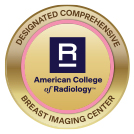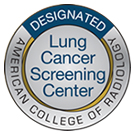To help improve blood flow, a doctor may request angioplasty. This minimally invasive procedure involves a balloon-tipped catheter, guided by medical imaging to open up a blocked vessel.
Following, a stent or metal mesh tube may be placed inside to keep the vessel open and blood flowing.
What Is Angioplasty and Vascular Stenting?
Angioplasty may be recommended when an artery or vein starts to narrow or become blocked. The procedure is typically performed by an interventional radiologist, as X-ray fluoroscopy or another imaging procedure is needed to guide a catheter to the blocked artery. Once there, a balloon located on the catheter’s tip is inflated to clear the blockage, before being deflated and removed.
If your doctor decides a stent is needed, a model consisting of wire mesh or wrapped in fabric-like material will be inserted into the artery for long-term usage. Both are inserted in a compact, collapsed state with the catheter. Once the blockage is removed, the stent expands to hold the vessel open.
During this procedure, the patient lies on a table with one or two X-ray tubes and a detector nearby. Fluoroscopy – a technology that translates traditional X-ray images into video and displayed on a monitor – helps guide the angioplasty.
A guide wire may also be used to trace the positioning of the catheter and stent. For certain patients, the doctor may recommend an IV, ultrasound and equipment to monitor heart rate and blood pressure.
If the procedure is performed on the carotid artery, the surgeon will use a specialized filter to prevent blood clots and plaques from flowing through to the brain, which helps decrease your stroke risk.
For patients, this combined procedure:
- Is significantly less invasive than bypass surgery and has fewer risks.
- Does not require general anesthesia, although local anesthesia may be used.
- Does not require a surgical incision, even though the catheter may be inserted near the groin.
- Allows patients to resume their normal daily activities, with minimal recovery time.
However, patients should be aware of the potential complications:
- Potential blood clotting or heavy bleeding may occur at the insertion site. In rare instances, patients have required a blood transfusion.
- The artery could experience a tear.
- Patients may experience blockages following angiography or insertion of the stent, requiring the artery to be reopened.
- Patients may have a higher risk of stroke when angioplasty is performed on the carotid artery.
- During the procedure, the blood vessel may close suddenly, requiring immediate treatment.
- Patients have also been known to experience allergic reactions if contrast material is used, infection at the insertion site, heart attack, decreased kidney function, cardiac arrest or death.
Who Should Have This Procedure?
Angioplasty may be requested for conditions that narrow or block blood vessels, interrupting blood flow. The following conditions can affect how much oxygen is delivered to the heart, brain and other organs, cause a buildup of plaque or high blood pressure:
- Coronary artery disease
- Atherosclerosis
- Peripheral artery disease (PAD)
- Carotid artery stenosis
- Renal vascular hypertension
- Narrowing in dialysis fistula or grafts
For patients with these conditions, angioplasty and stenting are not a cure and often require additional lifestyle changes, including medication, exercise, eating a diet low in saturated fats and quitting tobacco, in addition to specific treatment plans for diabetes, high blood pressure or high cholesterol.
While angioplasty and stenting improve blood flow through larger vessels and arteries, they are not viable treatment options for smaller blood vessels, particularly located in the kidney, legs or pelvis. As a result, treatments involving these areas may have no effect.
Procedure Preparation
Angioplasties are minimally invasive and performed on an outpatient basis. Prior to the procedure:
- Be sure to discuss all medications and supplements you take, as you may need to temporarily stop any NSAIDs, aspirin or blood thinners.
- Also discuss any recent medical procedures, illnesses or conditions, including if you are or may be pregnant, as the developing fetus may be exposed to radiation.
- Inform your doctor of any allergies, including to contrast dye, local or general anesthetic.
- You may be asked not to eat or drink for several hours before the procedure.
On the day of the procedure, arrive in comfortable, loose-fitting clothing. As the procedure begins:
- You will be positioned on the procedure table and connected to devices designed to monitor your heart rate, oxygen level, blood pressure and pulse. An IV to administer moderate sedation may be inserted; some patients fall asleep.
- The area where the catheter will be inserted is first sterilized and covered with a surgical drape. Additionally, the area will be numbed with a local anesthetic before a small incision is made.
- After a sheath is inserted into the blood vessel, the doctor inserts the catheter at the site and guides it with X-rays to the blocked vessel. Some patients report feeling pressure upon insertion.
- Once the catheter reaches the correct spot, contrast material is injected, so the doctor can perform an angiogram to identify where the vessel is blocked.
- Before the balloon inflates, the guide wire goes through the narrowed or blocked area. The catheter than passes through, before the balloon is inflated. For some patients, the balloon may be drug-coated. This leaves the drug in the vessel even after the catheter is removed. As the balloon stretches the artery, you may feel a degree of discomfort.
- Before the catheter, wire and sheath are withdrawn, more images are taken of the blood flow to indicate improvement.
- If a stent is used, the device may open on its own or use a balloon mechanism. Just as with the catheter, the balloon for the stent is inflated before it’s removed.
- Following all portions of the procedure, the catheter will be taken out and pressure is applied to the incision before a dressing is added. Your doctor may also use a closure device to seal off the small hole made in the artery. Some patients may experience bruising or soreness, although this is temporary.
- It’s not recommended patients go home right away. Instead, you’ll be transferred to a recovery room, where you may need to lie with your leg out straight for a few hours. Medical staff will monitor your blood pressure, heart rate and check the incision area for bleeding or swelling.
- Before you leave, your IV will be removed. If the incision was made along your arm or wrist, your doctor may recommend refraining from certain activities following the angioplasty.
- Your doctor may also prescribe blood thinners to relax your arteries and reduce the risk of spasms and blood clots. Follow-up blood tests may be required.
- Any contrast material used leaves your body through urination. Following the procedure, you’ll be asked to drink extra fluids, avoid exercise and lifting heavy objects for the next 24 hours.
Once you return home, it’s important to continue monitoring your condition:
- Patients should permanently quit smoking.
- If you notice bleeding at the incision site, lie down, apply pressure to the area and call your doctor. Let them know if your leg changes color or the area feels painful or warm.
- If you need to undergo an MRI, inform the medical professionals ahead of time that you have a stent. You may also be given a card with stent information.
Following the procedure, the interventional radiologist examines the before-and-after angiograms. You may be asked to schedule a follow-up visit, undergo additional blood tests or imaging.
Has your doctor recommended angiography and vascular stenting? Contact us to make an appointment today!





